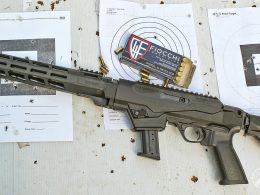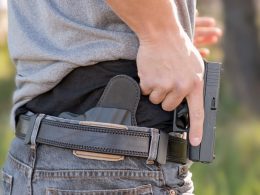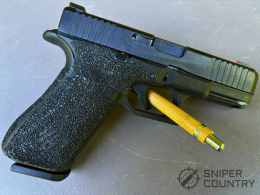In this Article:
The Colt (Combat) Commander has had a long, blue-ribbon-pedigreed history. Evolving from the legendary Colt 1911, the Commander is not a lot different from that storied gun. It has gained a reputation in its own right as a tough, reliable pistol.
For brevity’s sake, I’m will to refer to the gun as simply the Commander, as the original ones were named. The gun was similar, upon a quick visual examination, to a standard 1911. However, they differ in barrel length and the fact that it used, as a production item, the rounded rowel-style hammer. It did not use the spur hammer of the original 1911.
Other than those two things, the original Commander looked pretty much like a shortened 1911. Even the frame size was the same, with its 7- or 8-round capacity, depending upon the magazines you buy.
Colt Combat Commander Pros and Cons
- Accurate: The heavy ammo weight and design helps make this gun plenty accurate to shoot.
- Excellent Trigger: Trigger is crisp, short, and soft. It also has a short takeup and has a very identifiable click and reset point
- Ergonomic: The slim profile and grips make it comfortable to handle. It also offers a solid tactile grip.
- Easy to Use: It’s easy to disassemble and you don not need to press the trigger to do it.
- Thumb Safety: The thumb safety is hard to engage and disengage.
- Price: It’s expensive
BONUS OFFER: Get your free shooting range targets to print at home!
Get your free targets to print at home!
The Colt Combat Commander’s Popularity
The Commander has always sold well for Colt. Ever since its introduction to the public in 1950, shooters have liked that it was just a touch shorter than the full-size 1911. Still, it held 8+1 rounds.
With the introduction of the 3.5-inch Officer’s Model (or Officer’s ACP) in 1985, many shooters jumped on that bandwagon only to find that the shorties were very picky about what ammo would function the gun.
The 1911 was designed with a 5-inch barrel. Once you cut it down to 3 or 3.5 inches, the possibility is there for feeding and extraction issues to crop up. The Commander seems to hit the sweet spot. It has better reliability than many 3.5-inch 1911s, yet not as big as a full-size gun.
History of the Commander
Not long after the end of WWII (in 1949, to be precise), the military was looking for a lighter, shorter 1911 in 9mm that could be issued as a replacement for the 1911. The specs were written to include, in addition to other items, an overall length of no more than seven inches, 9mm caliber and a weight of 25 ounces or less.
They sent out a request for guns that met those specifications be submitted for trial. The Cold War had started really winding up and our military was seeking a gun and caliber that would be consistent with NATO specs, yet would be something that our troops would have more than just a passing familiarity with.
Colt responded with the aluminum-framed, 4.25-inch-barreled Commander in 9mm, while other guns and companies that were included in that trial included:
The Browning Hi-Power (The Inglis Company in Canada), plus another Hi-Power (Fabrique Nationale in Belgium):
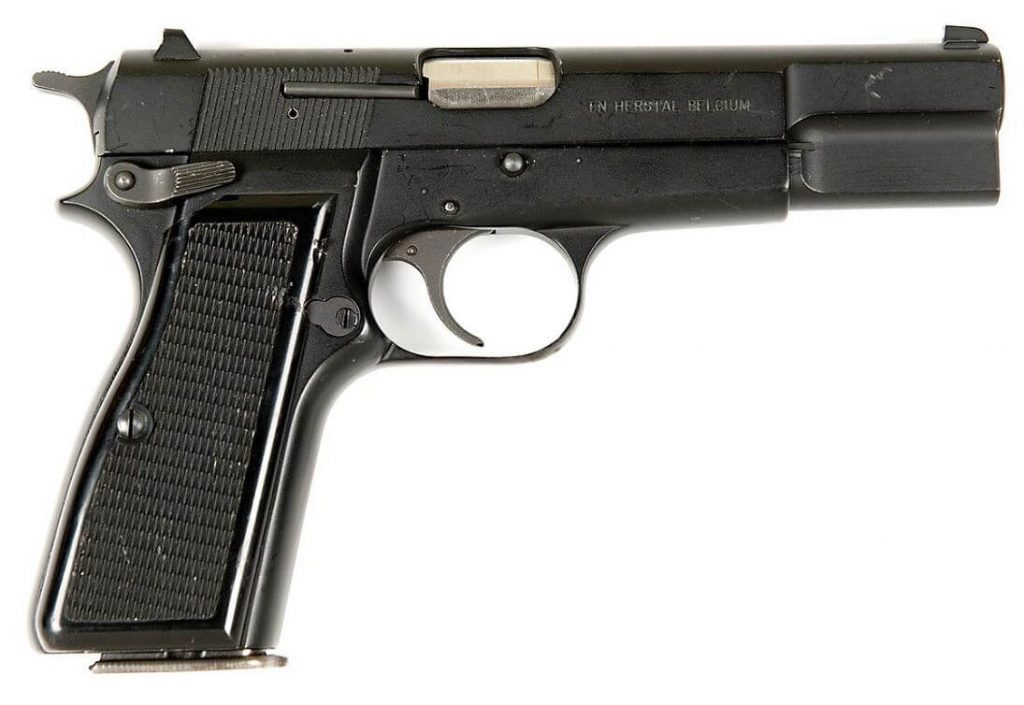
The T3 test weapon from High Standard:
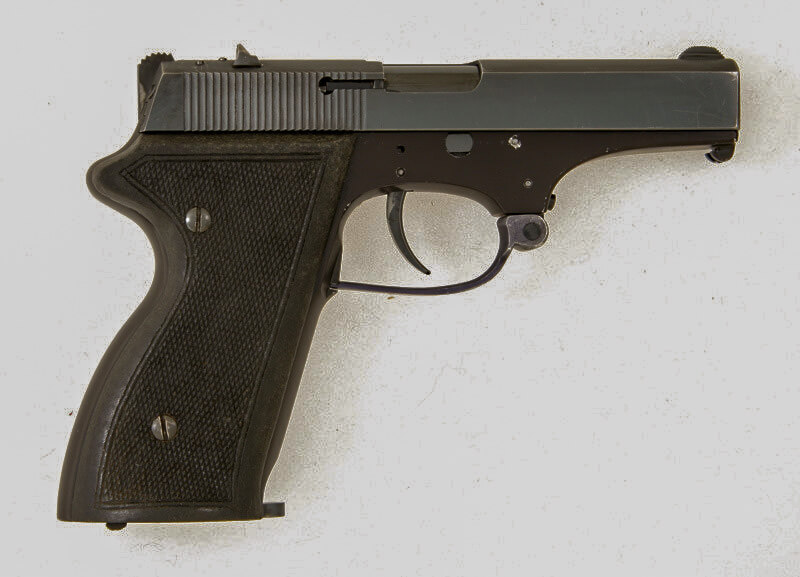
and finally, the Model 39 (Smith & Wesson):
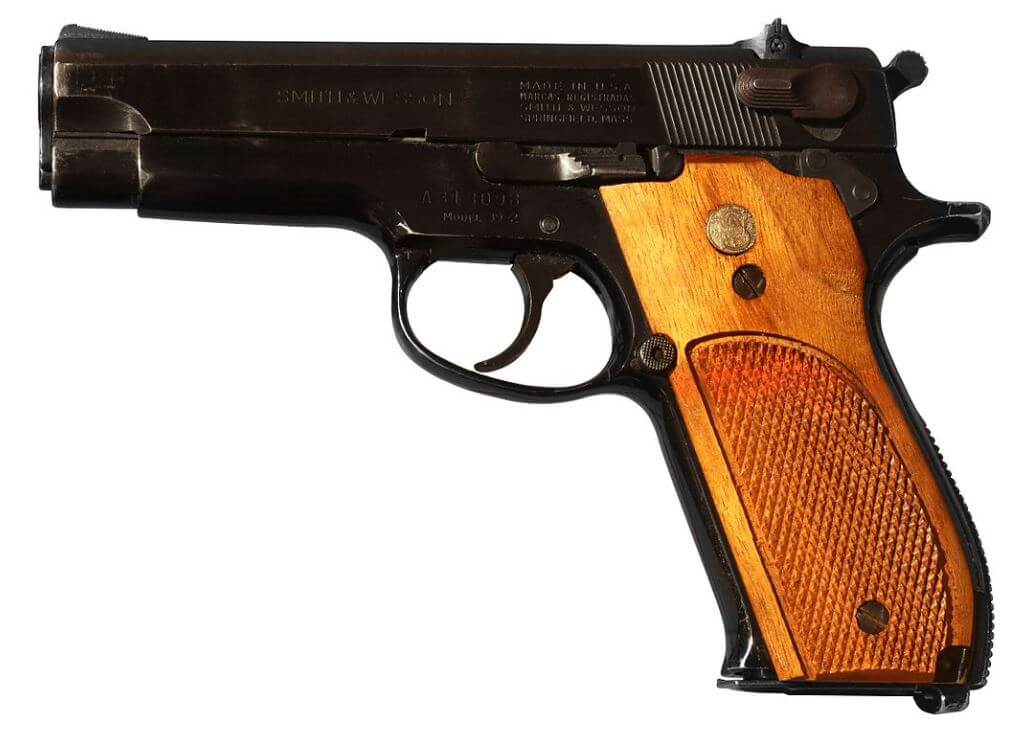
None of the pistols were selected. It is interesting to note that the Commander was the very first 9mm production gun that Colt made. As I alluded to above, the NATO alliance was doing everything it could to present a unified front against Communism, right down to every member nation playing by NATO’s rules where calibers were concerned. So, in 1949 we had a lighter, slightly-shorter 9mm 1911 for officers. It utilized a 9-round single-stack magazine.
Fast-forward a year. In 1950, Colt put the Commander into regular production so that ordinary folks like me could buy one. Colt had already set a record within the company by making the Commander their very first 9mm production pistol, and now they achieved another first: the Commander was the largest gun made at that time with an aluminum frame. The first year’s production also included pistol chambered in .45 ACP and .38 Super.
Enter the Combat Commander
In 1970, Colt introduced a steel-framed version of the Commander and named it the Combat Commander. They then re-christened the original aluminum-framed gun the Lightweight Commander. There was also an optional model made in a satin nickel finish. My test sample is a Combat Commander.
Variations
There have been a few major variants made over the years. These included:
- Colt Combat Elite. This was a gun made for combat-style competition shooters, with the .45 version having two 8-round magazines and the .38 Super, two 9-round magazines.
- The “C.C.O”, or Concealed Carry Officer’s pistol. This gun mated the slide and barrel of a stainless Commander with the shorter, blued frame of the Lightweight Officer’s (3.5-inch-barreled) Model.
- The Colt Commander Gold Cup. This pistol was designed to be National Match-ready out of the box. It included one 8-round magazine with an extra recoil spring and an additional 7-round magazine for wadcutters.
And, for those of you into a little more detail, here’s a screenshot from Sightm1911.com that explains models and variants in a little more detail:
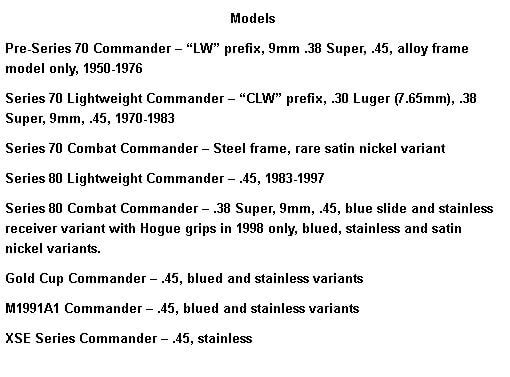
Popular Articles
Colt Combat Commander Specs and Features
The Commander I am going to examine in some detail was loaned to me by my friend Marty, who owns a business distinctly unrelated to firearms sales but had, at one point in time, an FFL. This allowed him to buy many different guns, which he is gracious enough to loan me for review.
Another note about his collection: it consists of top-quality, name-brand firearms, which is represented by the Delta Elite 10mm he loaned me for another article and this Commander.
Technically, this is a Combat Commander, since the frame is made of stainless steel, not aluminum, which is obvious in the photo. His Commander has been worked on a bit and is a hoot to shoot.
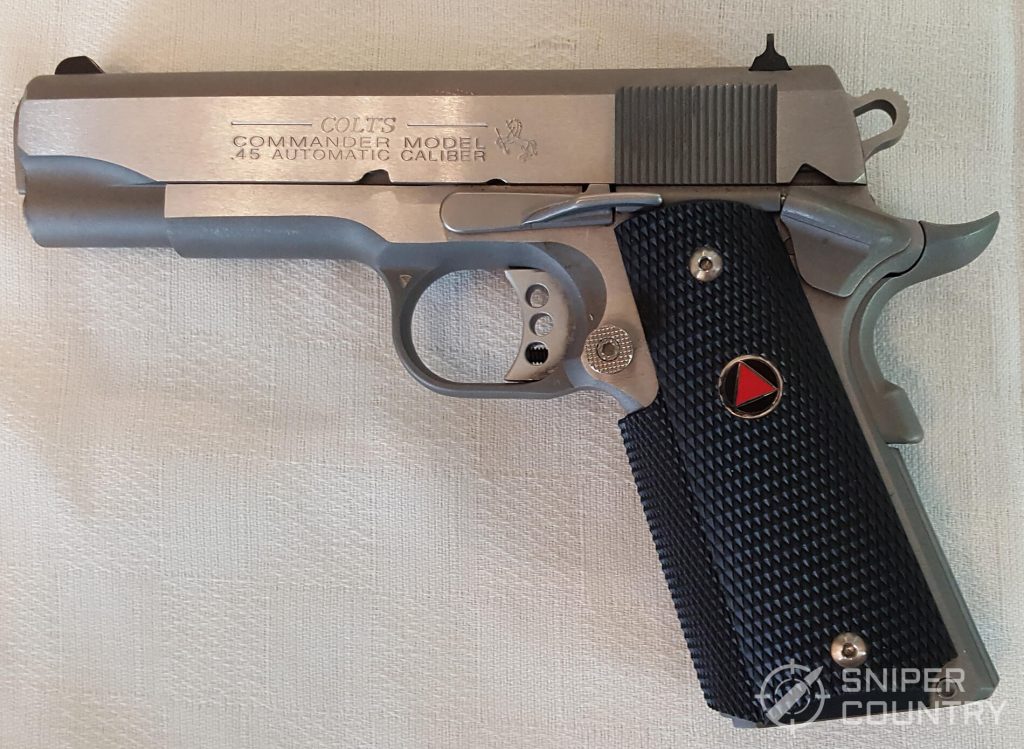
Here are some photos of my sample gun’s components.
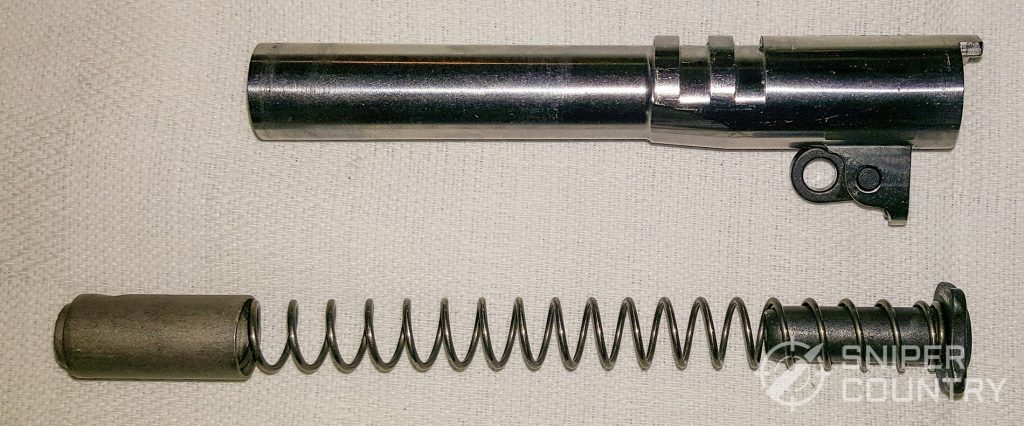
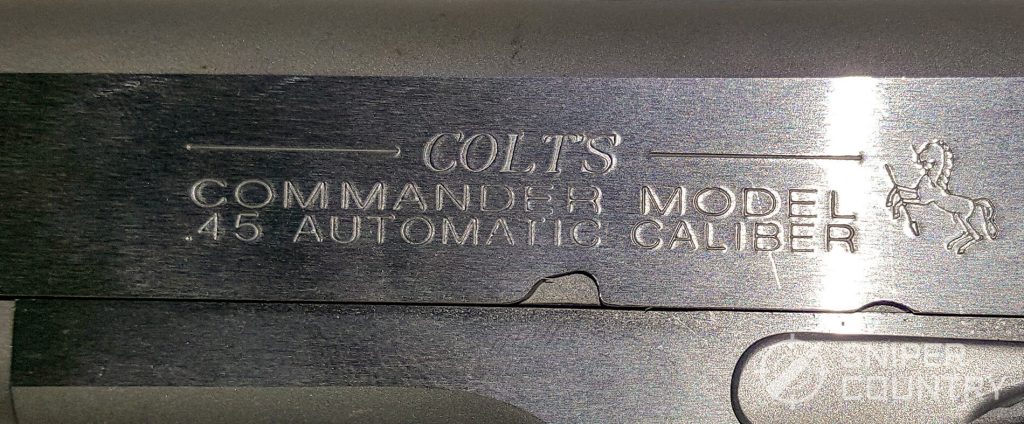
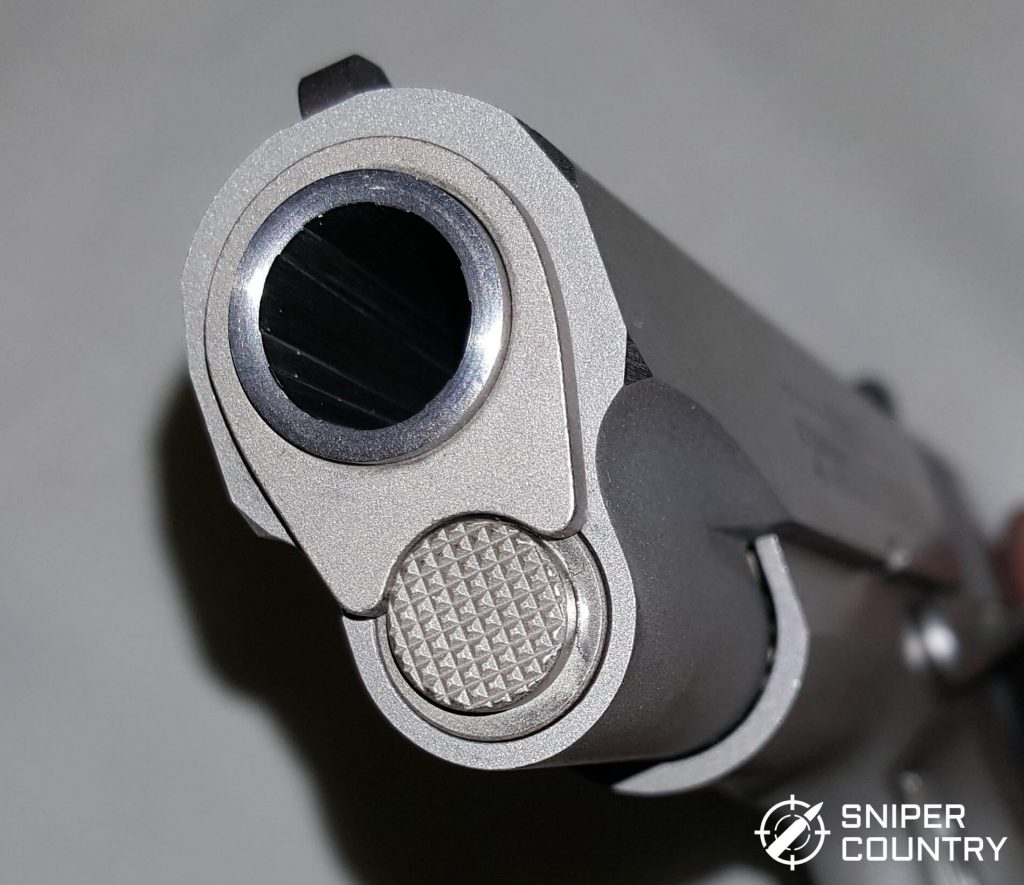
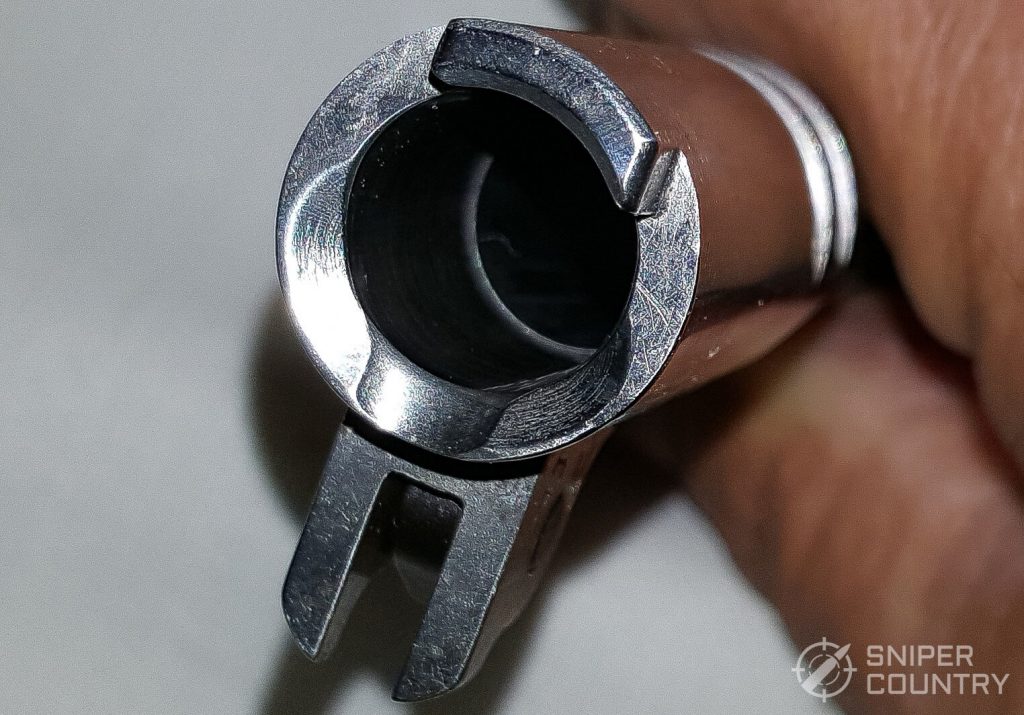
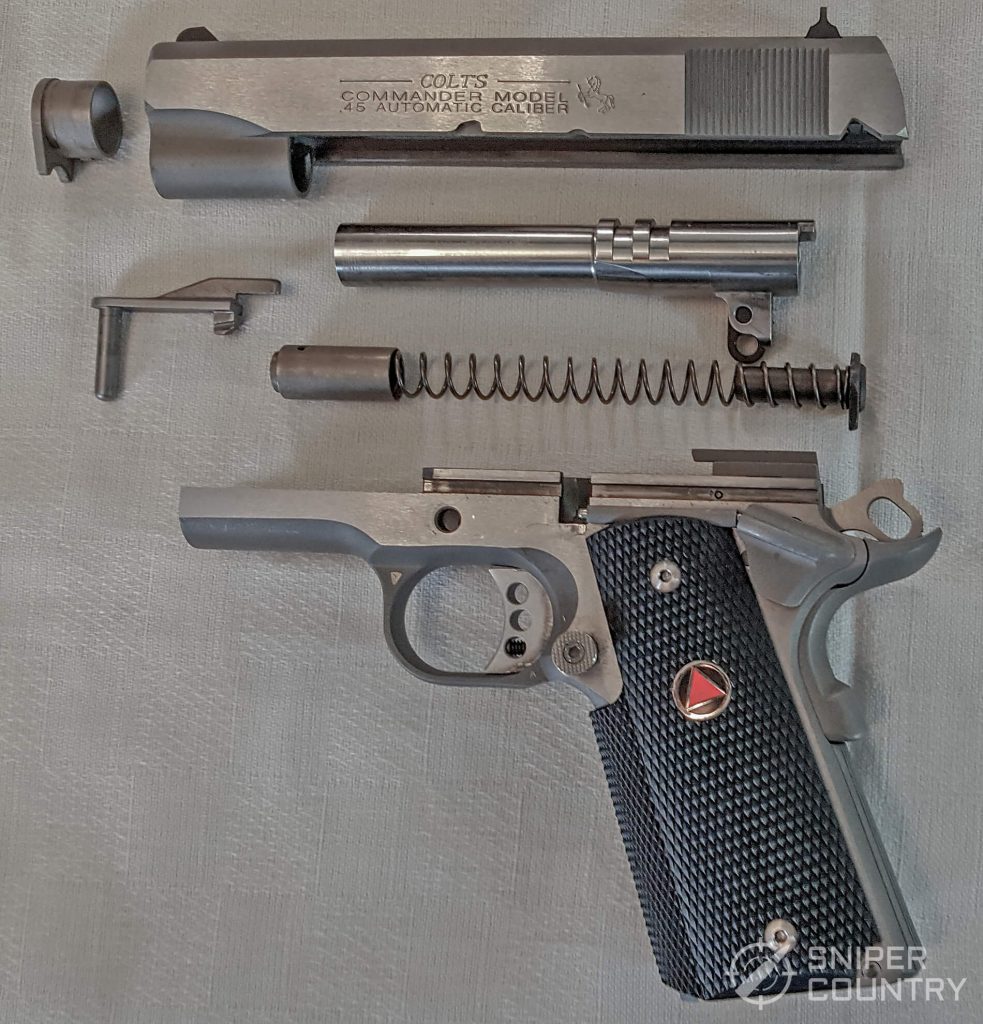
The standard solid bushing is obvious. Some shooters have experimented with finger-style bushings. Also, note frame cut-out over the slide stop hole by the plunger tube. This was done to prevent frame stress fractures that had occurred in very-early-production Delta Elite 10mm guns. It proved a success, so the procedure was moved throughout all 1911 production.
Not pictured: the magazine I used. It did not come with the gun, but was one that I own. Again, this shows how versatile this platform is. Almost any 1911 magazine will work. (I did have one mag that was just too wide for the mag well, but another I tried worked so I used it).
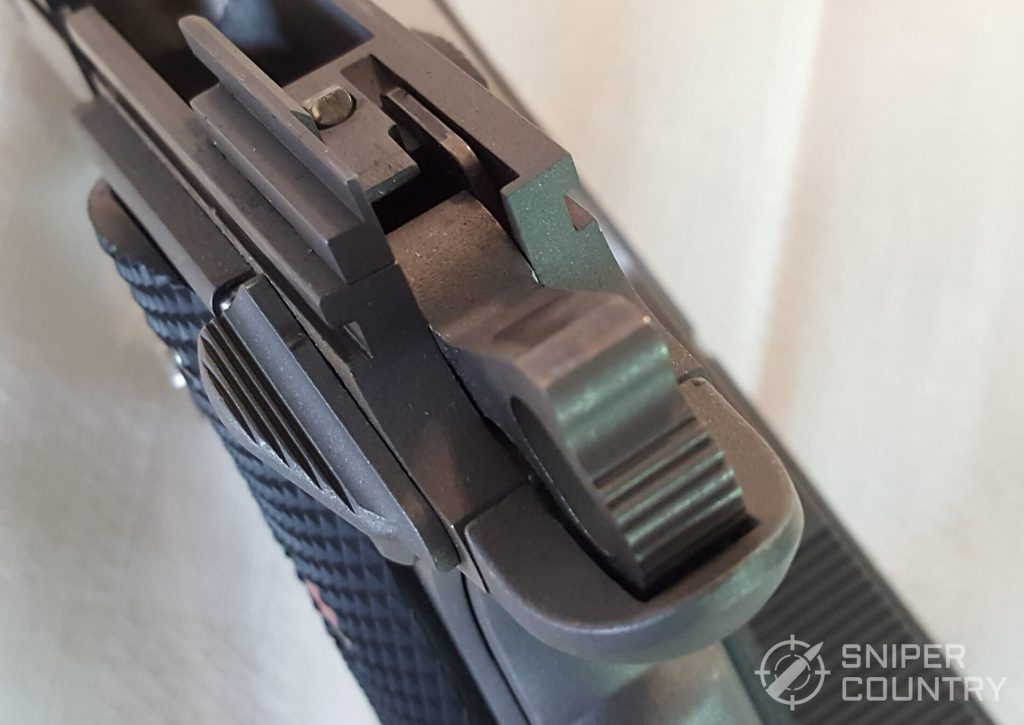
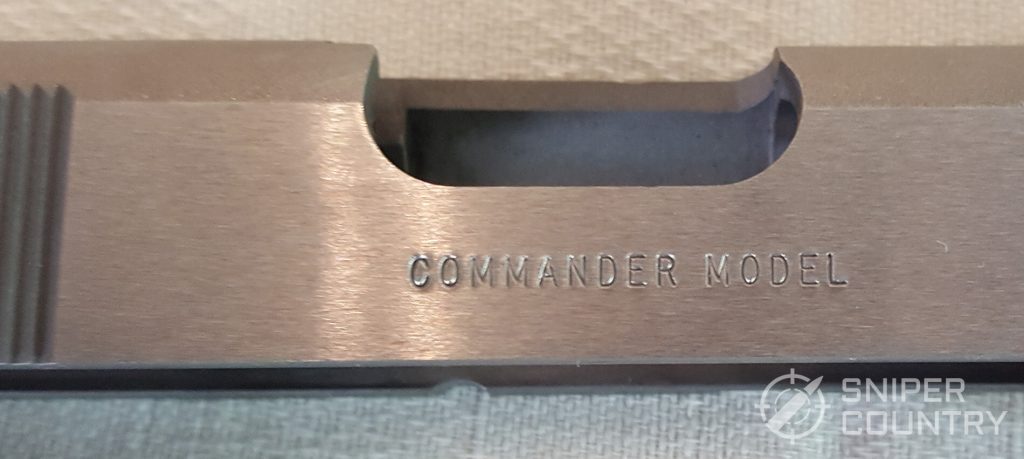
Colt Combat Commander Spring Assembly
Here’s an interesting note about an upgrade that Colt made to its 1911 pistols’ recoil spring assembly, and in particular the Lightweight Commander. A dual recoil spring system was introduced. This spring change was part of some design tweaks that the Marine’s M45A1 pistol received in 2011.
At least, in part due to the success of that change, Colt began introducing the dual recoil spring into its 1911 line. The Lightweight Commander got its new spring setup starting with those guns shipped in November of 2015.
The springs are counter-wound to avoid binding and they are designed to help with picking up the new round from the magazine when the slide reciprocates. They also are supposed to add some time between spring changes and to soften frame battering, which in turn leads to a softened recoil impulse.
Reliability is enhanced, as the springs are very positive in their function. This was important to the Marines, as the guns would be subjected to dirt, mud, sand, etc. and reliability is obviously of tantamount importance. The assembly consists of four parts: two springs, and a specially-designed recoil guide rod and plug.
If what I read is correct, Colt is in the process of introducing this assembly into most, if not all, of its 1911s. Here is what it looks like:
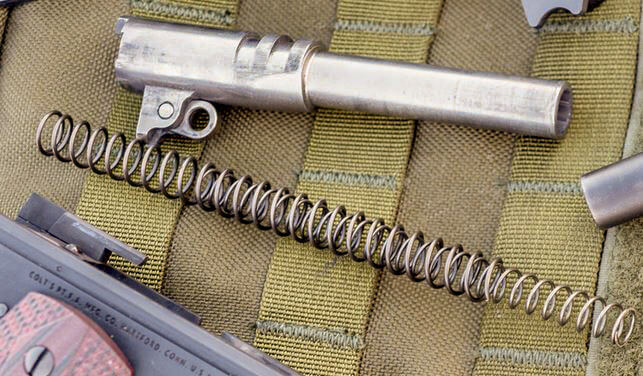
Personal Experience with the Colt Combat Commander
I owned an aluminum-framed Commander once upon a time back in the 1980s. It was a plain-jane blued model with no bells and whistles. It had the factory hard rubber grip panels, black sights and no extended slide release or thumb safety.
The beavertail — well, there was not much of a beavertail and no memory bump on the grip safety. Totally stock, early ’80s vintage.
Compare this image with that at the top of the article that shows the current-production Commander. The new one includes many extra features that you would’ve paid a pistolsmith big bucks to install on the gun below — better sights, adjustable trigger, extended beavertail, grip safety with a memory bump, extended thumb safety plus upgrades on the inside.
The new guns are a good buy, and really don’t cost much more than guns from the 1980s when adjusted for inflation. They have never been inexpensive, but you tend to get what you pay for.
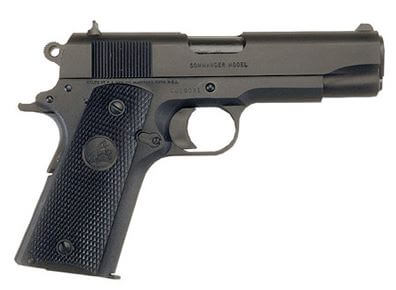
I kept it long enough to understand that, without an ambidextrous safety, the gun was problematic for me to carry as I am left-handed.
I traded it for something a little more conducive to carry. If I had thought about it much at the time, I might’ve just had an ambi safety installed. It was a real Colt, for Pete’s sake, and I should’ve kept it.
BONUS OFFER: Get your free shooting range targets to print at home!
Get your free targets to print at home!
So, there we have the history and variations of the Commander. Since 1950, it has been a steady seller and a viable pistol for concealed carry (CCW insurance review), home defense, competition and other uses. Let’s look at specifications of the current model.
Specs of the current production Lightweight Commander (taken from Colt’s website and other sources. These are correct as of the time of writing):
| Barrel Length: | 4.25 inches |
| Capacity: | 8+1 |
| Caliber: | 45 ACP. Combat commander available in both .45 ACP and 9mm, with 9+1 capacity). Lightweight Commander not offered in 9mm, according to Colt's site |
| Overall Length: | 7.75 |
| Weight: | 27 ounces |
| Features: | Upswept Beavertail Grip Safety/ Series 80 Firing Pin Safety |
| Action: | Single Action Hammer Fired Semi-Auto |
| Safety: | Thumb Safety, Grip Safety, Firing Pin Safety |
| Grips: | G10 Black Cherry Grips |
| Finish: | Blue |
| Stock: | Checkered Black Cherry G10 Grips |
| Sights: | FT: Novak White Dot RR: Novak Low Mount Carry |
Shooting the Combat Commander
Having shot a Commander, albeit a Lightweight version, I was really looking forward to shooting the steel-framed version. Plus, having owned several .45s (Best .45 ACP Pistols) over the years and owning a .45 Springfield XD(M) now, I have an assortment of ammo to try in this gun.
Here’s a very quick-and-dirty video I recorded just to show the recoil (or lack of it) with a mid-range target load.
A not-too-sharp screen capture from that video showing the gun in recoil.

Not much recoil here. You can see the ejected case just above the gun.
This particular Combat Commander was a joy to shoot, especially since it had been gone over by a gunsmith to make it even better. The trigger broke right around 5 pounds, estimated, with very little take-up. It broke, as the saying goes, like a glass rod.
Also, this was just a general point-and-shoot into the woods in order to get a few seconds of video showing the gun in recoil. I will shoot for groups and velocities later. Really, there was very little difference that I felt between shooting this gun and a regular, 5-inch 1911.
The 3/4-inch-shorter barrel didn’t feel any different in recoil and handling than have several full-size 1911s I’ve owned and shot over the years. And, while we’re talking about carrying this gun, let’s look at a point or two.
Carrying the Commander Concealed vs. Full-Sized
The only advantage, if any, that I can see with the Combat Commander as a carry gun is that it might conceal a little easier than a full-size gun (Best Concealed Carry Holsters). But I’ve always said that barrel length makes very little difference in the ability to conceal a pistol or revolver.
What would make the difference in carry attributes between the two pistols is the lighter weight of the aluminum-framed Commander. The grip length has a lot to do with concealability, too.
What makes a gun disappear in concealment is a shorter grip. That’s what will print through your shirt or covering garment.
The regular, square-butt 1911 is really bad at this. If they had shortened the grip by one round or so and then rounded off the butt of the grip, it would make the Commander easier to conceal. (Some companies do make guns like this).
I guess the advantage is that the Commander will take regular 1911 magazines, as I found out today when I dragged a couple of my old 1911 mags out and shot some SWC loads I’d had a while. No problem with functioning — all the rounds worked as planned. But, if I owned it, I wouldn’t plan to carry this gun concealed. I just felt the need to remind shooters that barrel length is secondary in the concealed-carry priority, while grip length matters more.
The Commander can make a great carry gun, and a lot of folks carry even full-size 1911s and conceal them just fine, so 3/4 inches off the barrel should be a bonus. They just don’t work for me as concealed weapons. But that’s me.
How Does the Colt Combat Commander Compare With A Polymer-Framed Gun?
Striker-fired polymer-framed guns are all the rage these days, and a lot of shooters (especially younger ones) have gone from day one of their shooting experience without ever touching a 1911, let alone firing one.
The poly-framed XD(M) tends to soak up recoil a bit better in my experience than the steel-framed Commander, but both shot well. I’m just more familiar with the XD(M).
Here they are:
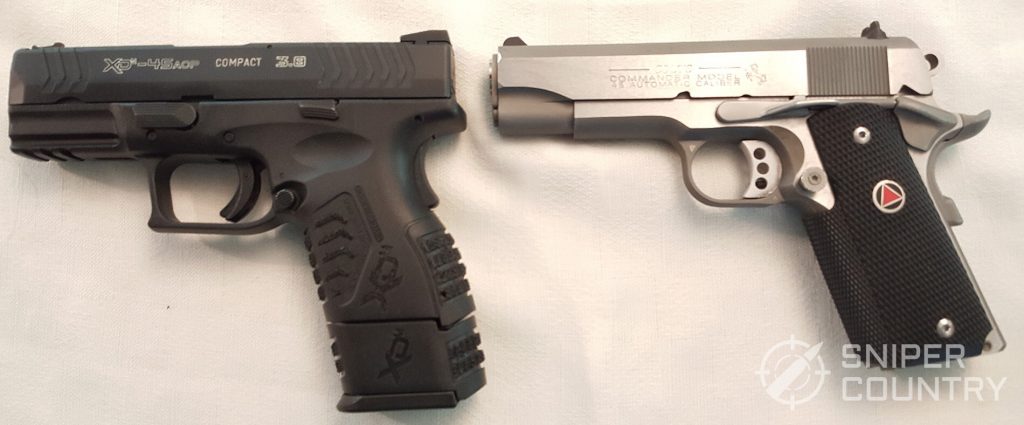
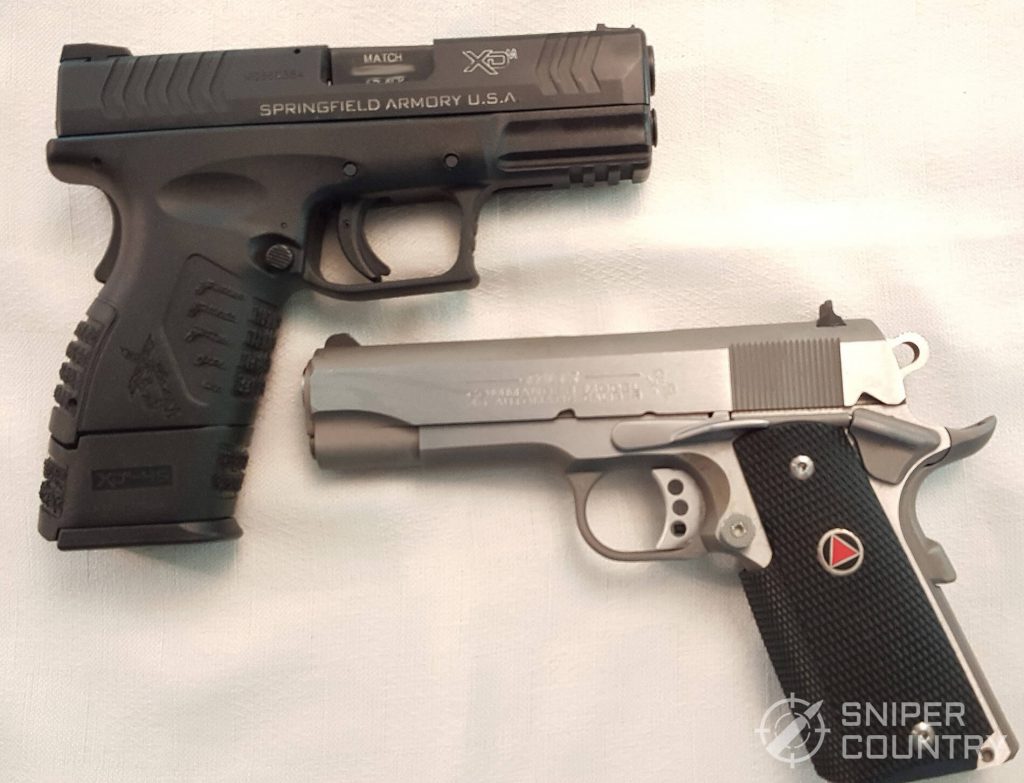
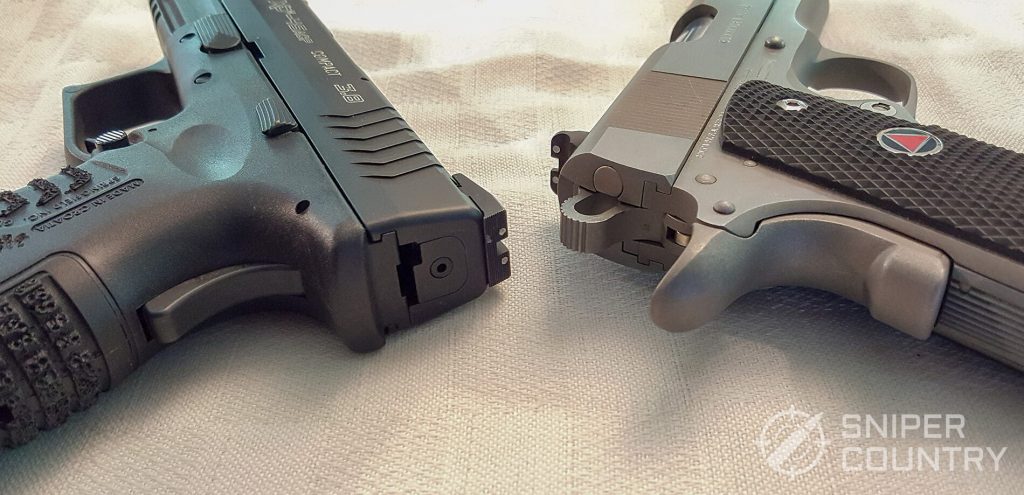
OK, enough about comparing guns and shooting characteristics. Let’s talk about the test ammo I used.
BONUS OFFER: Get your free shooting range targets to print at home!
Get your free targets to print at home!
The Bullet for the Colt Combat Commander
Here is what these bullets look like, in the order I shot them.
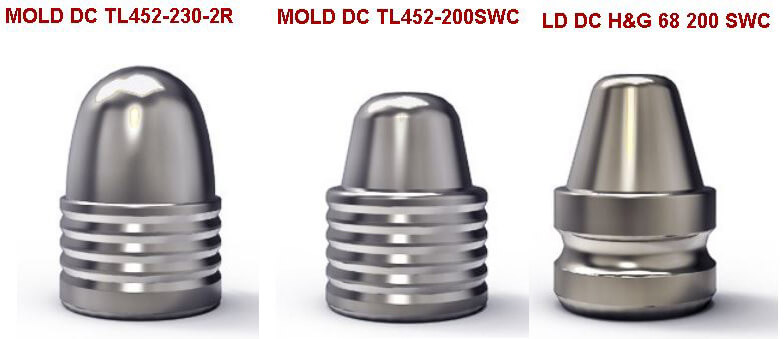
Notice the sharp driving band shoulder on the H&G 68 and the flat meplat, or nose — the Colt preferred this bullet, as does my Springfield. It has been around, as I said above, for decades.
Part of the reason for its success is that it contacts the feed ramp of a 1911 as if it were a round-nosed bullet and thereby eases feeding into the chamber. This bullet, originally thrown from Hensley & Gibbs mold number 68 (out of more than 500 molds they made) dates from the 1930s (from what I can tell) and has become the gold standard of .45 ACP semi-wadcutters. It can be very accurate, at least in my experience.
Notice that Lee even calls it by its original name. It is famous among reloaders (read my guide on how to reload). If anyone out there has more information about the origins of the H&G 68, please leave a comment below. I’d like to know more about it.
Here is a target I shot using this bullet and a middle-tier charge of HP 38 (Winchester 231 double). This is not exactly Olympic-level shooting, but anytime I shoot a strange gun (strange to me, that is), I’m glad to get shots on the paper at 20 yards.
I can see, with a little more development, this bullet and powder really working well with this Commander. If this were my gun, I’d move the rear sight a bit to the port side, to move the group to the left. I always shoot to the right but that’s a whole other article.
Suffice it to say, I’d probably stick with this load unless I needed something with a bit more oomph. (The tearing effect is due to the paper I used to copy the target with. It’s not very thick, unlike real store-bought targets. It’s just a lot cheaper, since I design and print my own. I make different targets for different purposes).
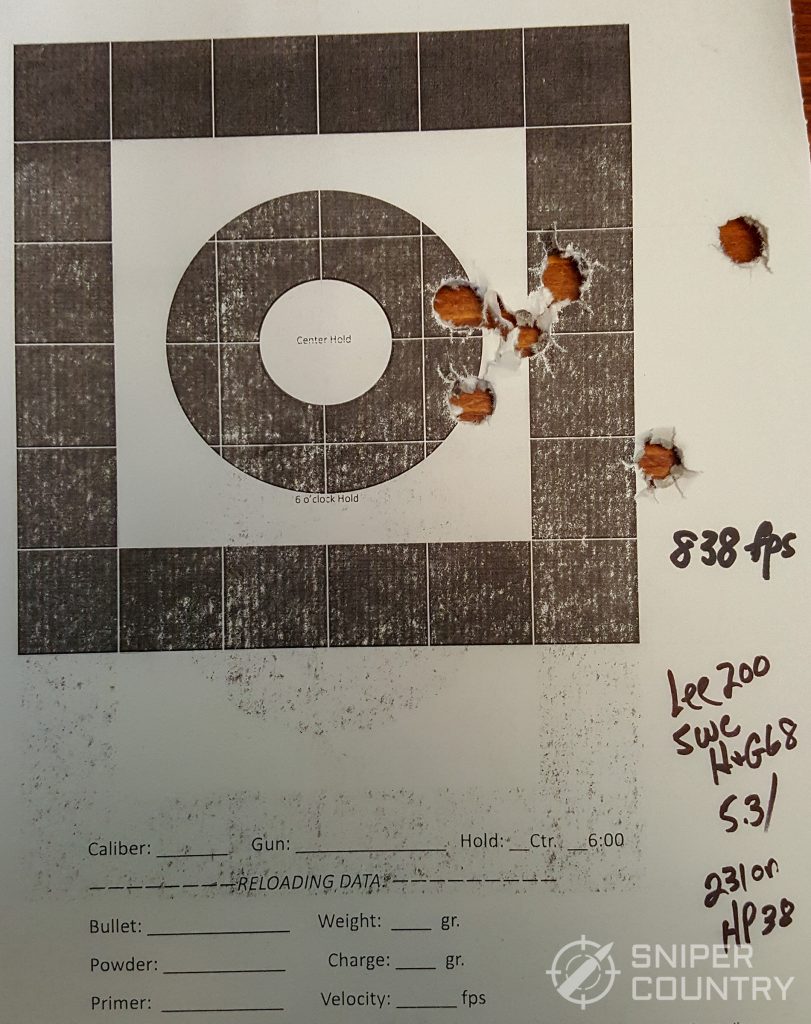
Again, I have shot many better groups, but this was a quick-and-dirty accuracy check with a gun I’d never shot before, so this will work. I shot off a bag from my bench. My homemade target has an overlaid grid of one-inch squares, so you can get an idea of group size. I didn’t measure it.
Taking the Colt Combat Commander Apart
Here’s a video I found that demonstrates how to field strip this gun:
Conclusion
Colt 1911s have always been accurate for me. They invented, or perfected, the 1911 over 100 years ago so I think they have things pretty well figured out. To own a Colt Commander of any type would be a good thing, especially if you are looking for a lightweight carry gun in .45 ACP and like the single action side of things.
If you want a Commander in 9mm, there’s one available, or if you just want a lighter-weight .45 Commander, that’s out there, too. This stainless Combat Commander shot a lot like a regular full-sized 1911, especially with my target-velocity reloads and JHP rounds.
I think this would make a great all-around pistol, one that could fill several roles like home defense, concealed carry, target /competitive shooting, range gun. You can’t go wrong owning a gun with the rampant colt etched into the slide. It was that way over a century ago, and still is.
As always, I welcome comments below. Now go shoot and stay safe.

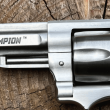



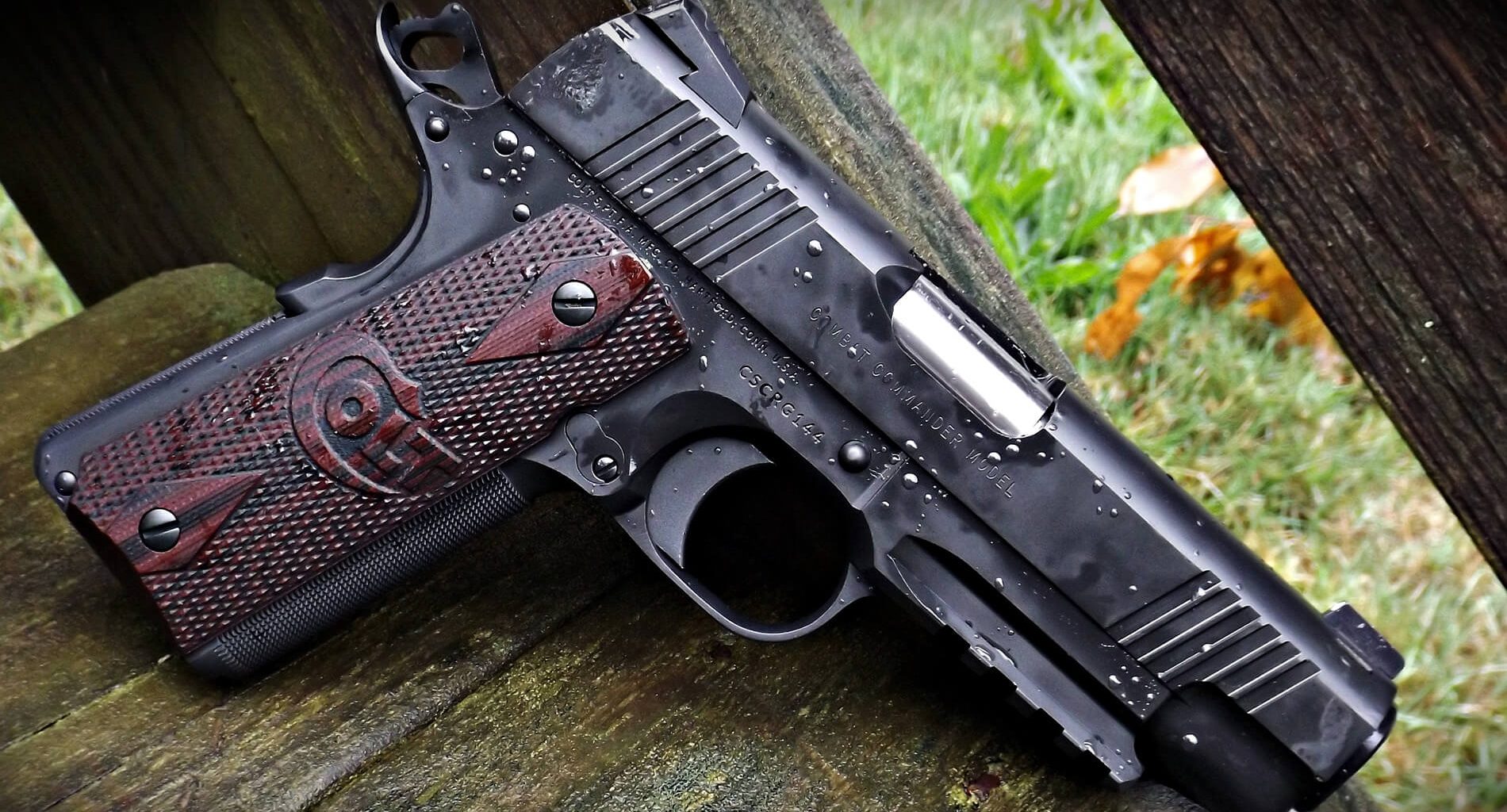
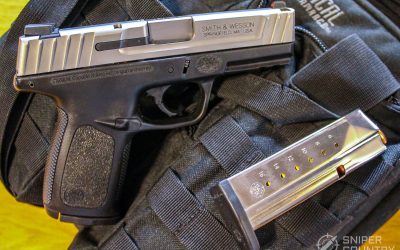

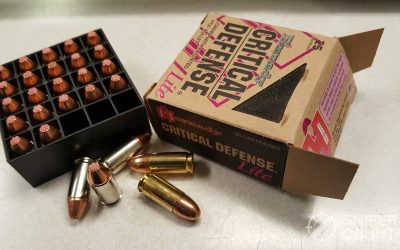
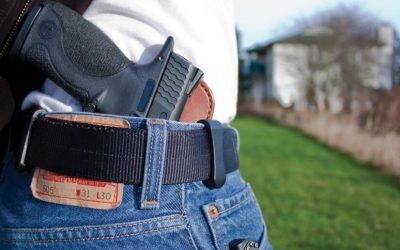
![9mm Glock Models [Ultimate Guide]](https://www.snipercountry.com/wp-content/uploads/2018/10/Glock-17-vs-Glock-19-vs-Glock-26-vs-Glock-41-vs-Glock-43-WM-400x250.jpg)
![Handgun Caliber Chart [2025 Ultimate Guide]](https://www.snipercountry.com/wp-content/uploads/2018/10/Handgun-Caliber-Comparison-400x250.jpg)
![Rifle Calibers [Ultimate Guide]](https://www.snipercountry.com/wp-content/uploads/2018/12/Header-1900-400x250.jpg)


